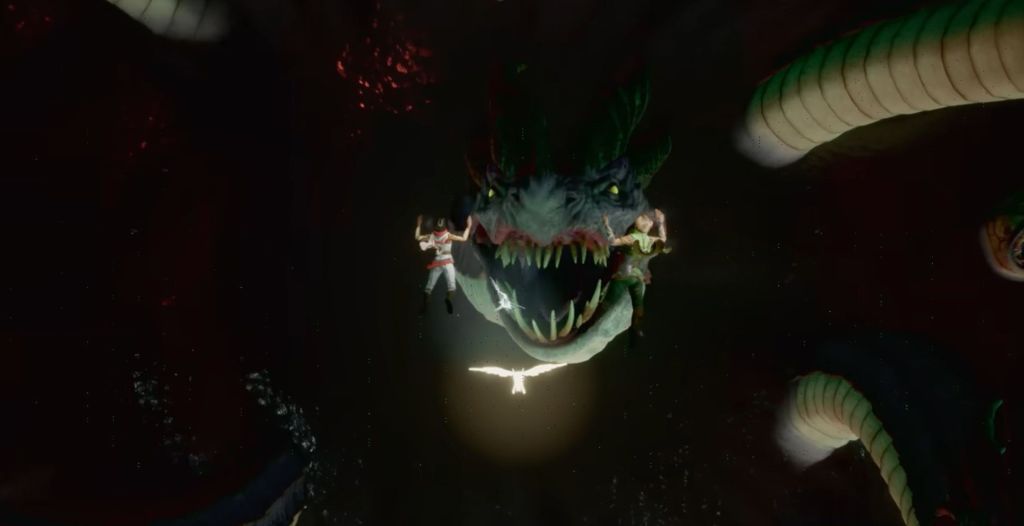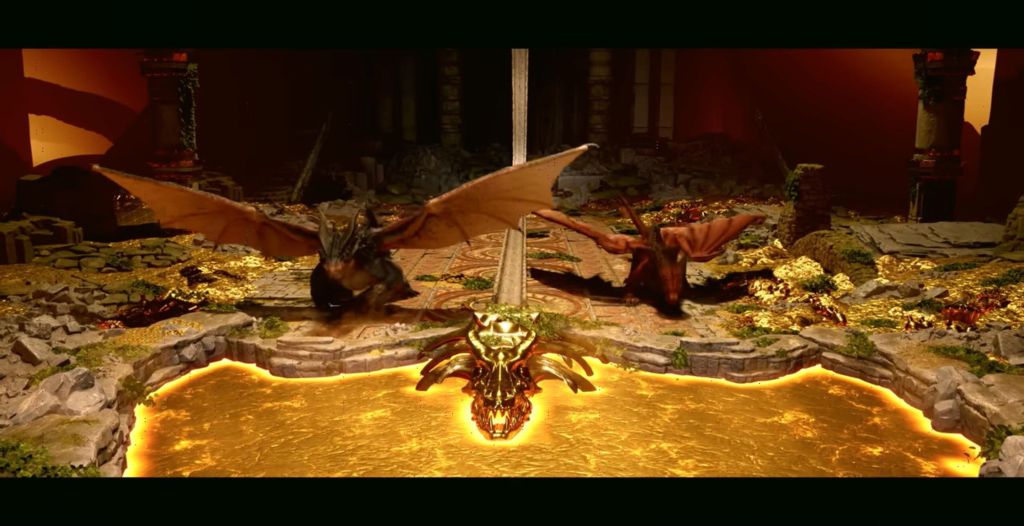When Split Fiction was announced, like a lot of people, I was immediately excited to play it. Hazelight Studios has consistently given us co-op classics. A Way Out and It Takes Two are both incredible games. The latter won Game of the Year at The Game Awards in 2021. A fact that our very own Dwayne was just so happy about.
But with Split Fiction, Josef Fares and his team have outdone themselves. From beginning to end, this game is a masterpiece. Couch co-op has always been something gamers my age talk about with no end in sight, and for good reason. When a game like this comes along and shows you what it’s all about, it’s hard to deny the power of playing with someone right next to you.
Videos by VICE
‘SPLIT FICTION’ STAYS ON THEME

Hazelight has stated that they’ve made these games on specific keywords. “A Way Out [is] ‘Trust’ and in It Takes Two it [is] ‘Collaboration’. With Split Fiction, it’s all about ‘Friendship’.” When I read that, I started thinking about the other two games and how the gameplay was so relevant to the story. Even though all three games share the same DNA, they feel totally different. That’s a credit to the writing and storytelling.
Split Fiction’s story is based around Mio and Zoe, two writers of extremely different personality types. Mio keeps to herself, and she’s a bit short with people. Zoe is bubbly and outgoing. They’re both struggling in their careers, and that leads them to Rader Publishing. Here, they come face-to-face with The Machine, which Rader touts as something that will allow people to live their ideas. The writers are all placed in their own bubble that suspends them in mid-air while they enter their stories.
Of course we know that there would be no game if everything went perfectly. Things go south, some pushing and shoving ensues, and both Mio and Zoe find themselves in the same bubble — and therefore, in each other’s stories. Zoe’s stories exist within the fantasy genre and Mio’s reside in the sci-fi genre.
the more we get together

The gameplay is everything I expect from Hazelight at this point. Tight and intuitive controls keep you from getting too far off on your jumps but still offer some control. The greatest thing, though, is that they continue to create puzzles that make you work with your partner. There is nothing that can be done alone to progress, and the puzzles are always challenging enough to make you stop and think without getting stuck.
My girlfriend and I played through the game in about 8-10 hours — accounting for child-related distractions and occasionally doing something silly in-game to annoy each other. I did notice just how much time was spent falling in this game. Truthfully, I think full-time jetpacks are needed for the next Hazelight game. I want to see how they would tackle flying mechanics. But they prove that not everything needs to be a marathon gaming experience to be impactful. The side stories in Split Fiction take the place of It Takes Two’s excellent mini-games, and they’re also worthwhile explorations. Each side story gives just a little more insight into who these characters are and what they’ve gone through.
And make no mistake, both of these characters have gone through some stuff. To say anything more would spoil it, but the story is incredible, and the journey Mio and Zoe take together feels natural. Outside of the side stories, this game is top-notch pop culture reference work. There is a great FromSoft nod in here, as well as a pretty cool Sailor Moon one. My favorite of all of them, though, is the clear Metroid influence on a particular section of the game.
GAME DEVELOPMENT IS MAGIC and ‘split fiction’ proves it

I wanted to carve a section primarily for one portion of the game that I cannot truly go into detail about. Even if I could, I wouldn’t. But it’s necessary to say this. The last two hours of this game are some of the most creative and daring moments of gameplay I’ve ever experienced. What Hazelight managed to do is Tears of the Kingdom-level amazing.
If you follow enough game devs on social media, you’ll run into one or two saying a variation of “It’s a miracle that games ever come out.” And it is. When you play the last section of Split Fiction, you’ll understand that. Game development is real-life sorcery, and we should all be doing more to make sure that these people get the opportunity to perform their magic as free from worrying about their jobs and work as possible.
That the story of Split Fiction could be looked at as a commentary on AI is not lost on me. AI can’t do what these people just did. You need humans to make the end of this game happen. You need people who care about what they do — who put themselves wholeheartedly into what they do — to make something this incredible. From a pure gameplay perspective, what I experienced shouldn’t be possible, and yet, they pulled it off seamlessly. Split Fiction is an outstanding commentary on friendship, opening up, and creativity that everyone must experience.
Verdict: Strongly Recommended
Split Fiction releases on March 6 for PS5, Xbox Series X/S, and PC. A code was given by the publisher for review. Reviewed on PS5.
More
From VICE
-

De'Longhi Dedica Duo – Credit: De'Longhi -

We Are/Getty Images -

Photo by tang90246 via Getty Images -

Credit: SimpleImages via Getty Images
